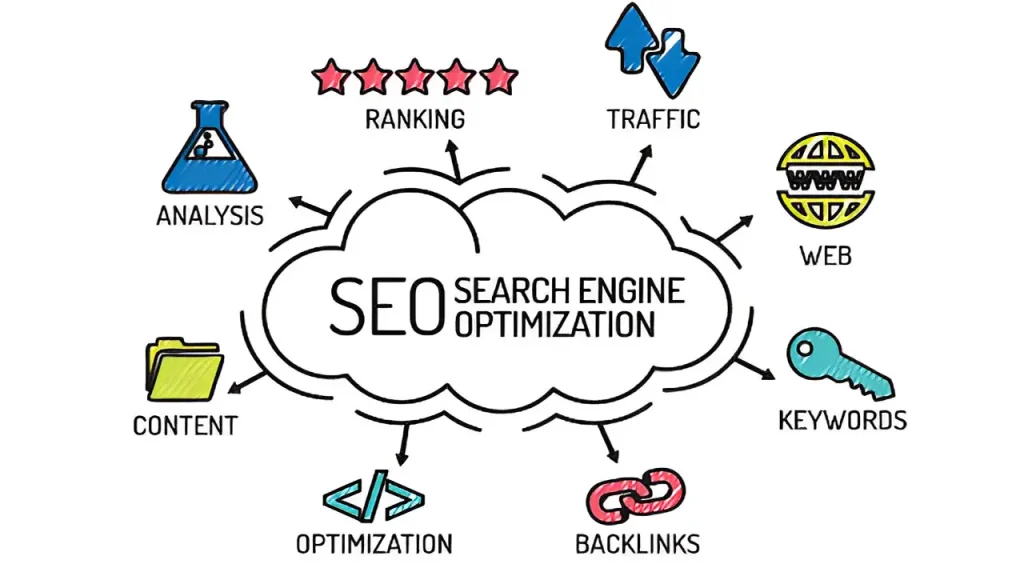Crafting Effective SEO Strategies for Sustained Online Success

Understanding SEO’s Role in Digital Marketing
In today’s digital age, online visibility is crucial for businesses striving to attract and retain customers. Search Engine Optimization (SEO) emerges as a powerful tool in this sphere, enabling companies to rank higher in search engine results and drive organic traffic to their websites. By partnering with an SEO company, businesses can leverage expert strategies to bolster their online presence and outpace the competition, ensuring long-term success in a rapidly evolving digital landscape.
The essence of SEO lies in its ability to enhance a website’s accessibility and relevance to search engines and users. Understanding and implementing effective SEO strategies become vital to successful digital marketing as more businesses transition online. Experts note that it’s not just about being seen; it’s about being seen by the right audience and fostering engagement through high-quality, optimized content. This nuanced approach to visibility ensures that businesses reach a wider audience and cultivate meaningful interactions that drive conversions and customer loyalty.

The Basics of Keyword Research
Any robust SEO strategy begins with comprehensive keyword research. This process entails identifying potential customers’ terms and phrases when seeking products or services online. Tools like Google’s Keyword Planner and SEMrush provide insights into keyword popularity and competition levels.
By targeting these key terms, businesses can align their content with user search intentions, increasing the likelihood of attracting relevant traffic. Additionally, understanding keyword variations and semantic search patterns allows marketers to craft content that resonates on multiple levels of user inquiry, enhancing the overall efficacy of their SEO endeavors.
Crafting Quality Content for SEO Strategies
“Content is king” is a common adage in the world of SEO, and for good reason. High-quality, relevant content is fundamental to engaging an audience and encouraging them to interact with your site. It’s important that content creators naturally incorporate keywords into articles, blogs, and web page content.
This practice appeals to search engines and ensures that the content remains engaging and informative for readers. Structuring content with a clear purpose and conversational tone can keep readers engaged and encourage them to explore further, ultimately leading to a more satisfying user experience. Such an approach serves the algorithmic nuances of SEO and prioritizes user engagement, the ultimate goal of any successful content strategy.
On-Page Optimization Secrets
On-page optimization tasks are the backbone of a successful SEO strategy. These include optimizing HTML elements such as title tags, headers, and meta descriptions. Ensuring a mobile-friendly design is another critical aspect of on-page SEO, as many searches now occur on mobile devices.
Google’s algorithm prioritizes mobile-friendly websites in ranking, making this an imperative focus for SEO managers. Moreover, optimizing website speed and ensuring secure connections through HTTPS are equally critical to achieving higher rankings. These technical elements contribute to a smooth user experience, reducing bounce rates and, thus, enhancing a page’s overall SEO effectiveness.
The Impact of Backlinking on SEO Success
Backlinks, or inbound links from other websites pointing to your own, are crucial in SEO. They signal to search engines that your site is credible and valuable, improving its ranking. However, the quality of the backlinks is more important than sheer quantity. Quality backlinks from reputable sites carry more weight and can significantly boost a site’s authority and relevance.
A guide on the importance of quality backlinks highlights their pivotal role in establishing trust and authenticity across the digital landscape. Building these relationships often requires active outreach and the cultivation of content partnerships, ensuring that backlinks are as genuine and beneficial as possible.
Measuring SEO Performance
To determine the effectiveness of your SEO strategies, it’s essential to measure performance using analytics tools like Google Analytics. Key metrics include organic traffic, bounce rates, and conversion rates. By analyzing these data points, businesses can glean insights into user behavior and identify areas for optimization and improvement.

Regularly checking these metrics allows for iterative enhancements to SEO practices, refining methods to keep in tune with an ever-changing digital environment. By staying attuned to trends and shifts in these metrics, businesses can react proactively, ensuring sustained growth and success in reaching their target audience efficiently.
Integrating SEO with Other Marketing Channels
While SEO is a pivotal component of digital marketing, it works best when integrated with other channels, such as social media, email marketing, and paid advertising. Each channel supports the other, creating a cohesive and comprehensive marketing strategy that amplifies the reach and effectiveness of your SEO efforts.
The synergy between these channels ensures a consistent brand message and maximizes engagement across platforms. This integration also enables marketers to harness data across various touchpoints, providing deeper insights into consumer behavior and preferences, thereby refining and personalizing marketing efforts for enhanced efficiency and effectiveness.
Conclusion
SEO is far from static; it’s an ever-evolving field that requires marketers to stay abreast of algorithm changes and industry trends. Continuous improvement and adaptation are crucial to maintaining and enhancing search rankings. Businesses can ensure sustained success in the dynamic digital landscape by committing to regular updates and re-evaluating SEO strategies. Embracing SEO as a fluid and ongoing process allows companies to be agile and resilient, ready to meet new challenges and explore fresh opportunities as digital ecosystems expand and evolve.
